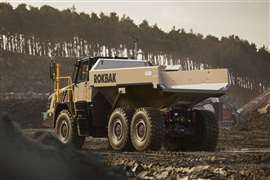Regional report: North America
09 January 2019
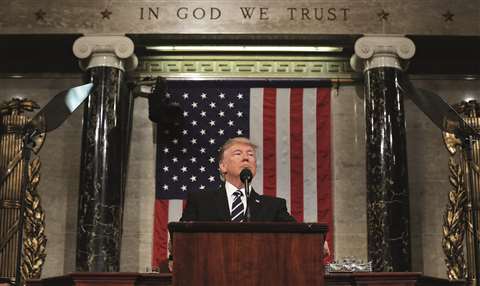
According to the US Census Bureau’s Value of Construction Put in Place Survey for September 2018, a total of $1.33 trillion was spent on construction work in the US, as a seasonally adjusted annual rate. This was up 7.2% on the same period in the previous year.
Given the sheer size of the country, it should come as no surprise that the US recovery is dominating the continued growth in the North American region. Total construction spending in North America is expected to rise by 3.2% in 2018, though this will then decelerate to 1.7% in 2019, according to global information provider IHS Markit. Within that, the US is the largest construction market, accounting for about 74% of total spending in the region.
IHS Markit’s forecast suggests that North America will experience a compound annual growth rate (CAGR) of 1.2% between 2017 and 2022, with infrastructure construction increasing 2%, making it the highest growth segment. In this prediction, it has been assumed that US infrastructure will benefit from an infrastructure bill that is due to take effect in 2019, something which is not guaranteed. While the bill is expected to apply to all forms of infrastructure, it is likely to be oriented towards highways and other roads. Meanwhile, the residential sector in the US will remain significantly below its typical levels, though it will continue its gradual recovery.
Earlier this year, the Trump administration announced a 25% tax on steel and a 10% tax on aluminium for the European Union (EU), Mexico and Canada.
Data from the US Department of Commerce shows that the US imports the most steel from Canada, the EU, South Korea and Mexico. In total, approximately $48 billion worth of steel and aluminium were imported by the US in 2017.
Many of the countries impacted have reacted angrily, with Canadian Prime Minister Justin Trudeau calling the tariffs an “affront” to the relationship between Canada and the US, and European Commission president Jean-Claude Juncker saying the move was “totally unacceptable”.
Voices in the construction sector – an industry that accounted for 43% of all steel shipments in the US in 2017, according to the American Iron and Steel Institute – have expressed concerns over how the tariffs will affect their businesses because they could result in cost increases, which must either be absorbed or passed onto customers.
Any reference to US tariffs would be incomplete without mentioning the trade war currently ongoing between the US and China. The US has so far imposed three rounds of tariffs on Chinese products, while China has tariffs on US goods of around $110 billion. Economists fear an escalation could harm the global economy, with both sides refusing to back down.
Airport expansion
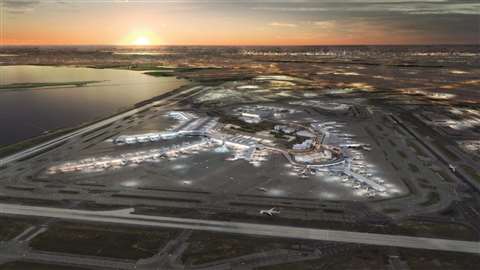
One example of the type of major construction project that is fuelling demand for steel in the US is the $13 billion plan to modernise John F Kennedy International Airport (JFK Airport) in New York.
The scheme will see the addition of two new terminal complexes, as well as the overhaul of airport infrastructure to incorporate the latest in passenger amenities and technological innovations.
New York Governor, Andrew Cuomo, said, “This historic investment to modernise JFK Airport and the surrounding transportation network will not only ease travel through this major hub, but it will ensure JFK joins the ranks as one of the finest airports in the world.”
The terminals will boost the airport’s capacity by 15 million passengers per year.
On the airport’s south side, the proposed new terminal will be developed by the Terminal One Group, a consortium of Lufthansa, Air France, Japan Airlines and Korean Air Lines. Their investment will total $7 billion.
On the airport’s north side, JetBlue will develop the $3 billion terminal building. Terminal 7 will be demolished and combined with the vacant space left by the demolition of Terminal 6 that was carried out in 2011.
Construction is scheduled to start in 2020, with the first new gates set to open in 2023.
Elsewhere, the resurrection of a high-speed rail link between Las Vegas and Southern California, which had been abandoned in 2016, could signal a positive sentiment in the market.
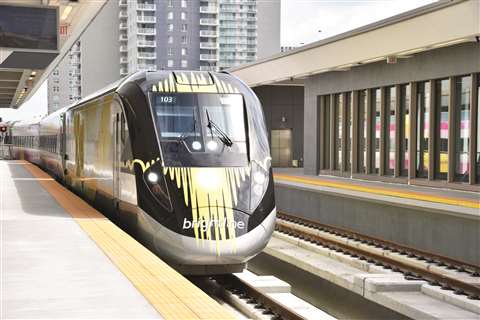
US-based company Brightline recently acquired the company XpressWest, which had the rights to develop the high-speed passenger rail project.
The line will be approximately 297km in length and it will initially run from Las Vegas to Victorville, a town approximately 20km from Los Angeles.
Patrick Goddard, president of Brightline, said, “Today’s announcement is an important milestone for our company as we reimagine transportation between these major metropolitan areas.”
According to Brightline, the route is one of the most travelled in the country, with more than 50 million annual trips being made between Las Vegas and Southern California.
The original plan by XpressWest was abandoned partly due to the US government’s insistence that the line should use trains made in America; XpressWest wanted to use Chinese models. However, Brightline said it would be using American-made trains in the new project. Construction is expected to begin next year and Brightline is planning to start initial service in 2022.
Building bridges
Linking the US with Canada, a $4 billion bridge is set to be built between Detroit, US, and Windsor, Canada.
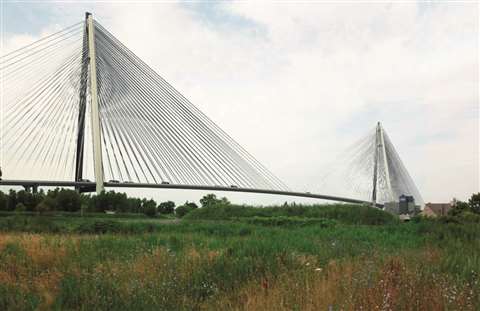
The project to build the Gordie Howe International Bridge was awarded by the Windsor-Detroit Bridge Authority (WDBA) to the Bridging North America consortium, which comprises ACS Infrastructure Canada, Dragados Canada and Fluor Canada, among others. It will be delivered through a public-private partnership.
Once completed, it was said that the six-lane cable-stayed bridge will be the longest cable-stayed bridge in North America, at 2.5km in length. The project is expected to generate between 2,000 and 3,000 construction jobs, and according to the latest reports the Gordie Howe International Bridge will be built using only North American steel. The bridge is expected to be opened to traffic in 2024.
Dwight Duncan from the WDBA said, “The selection of Bridging North America as the preferred proponent is another step forward towards the start of construction of the Gordie Howe International Bridge – the largest infrastructure project along the Canada-US border.”
Over that border in Canada, the heated housing markets in Toronto and Vancouver boosted residential construction in 2017. However, local and provincial governments have been taking action to discourage speculation, largely from Asian investors, and residential growth is forecast by IHS Markit to subside nationally to 2.2% in 2018 and 1.7% in 2019.
One example of such discouragement on the national scale was the Canadian government’s decision earlier this year to block a bid by CCCI – a subsidiary of China Communications Construction Company (CCCC) – to buy Canada-based construction firm Aecon.
The Governor in Council issued an order under the Investment Canada Act directing CCCC not to implement its proposed acquisition of Aecon. As a result of this, the arrangement did not proceed.
John Beck, president and CEO of Aecon, said, “While we are disappointed with the government’s decision, Aecon is and will continue to be a leading player in the Canadian construction and infrastructure market.”
Through the proposed acquisition, Aecon had hoped it would better position itself to compete with many large global construction companies working in Canada.
National security
In a statement made by the Honourable Navdeep Bains, minister of innovation, science and economic development, it was said that the government had listened to the advice of its national security agencies.
“Based on their findings, in order to protect national security, we ordered CCCI not to implement the proposed investment,” he said. “Our government is open to international investment that creates jobs and increases prosperity, but not at the expense of national security.”
Canada’s infrastructure sector, however, is benefitting from federal stimulus and is expected to grow by 4.8% in 2018.
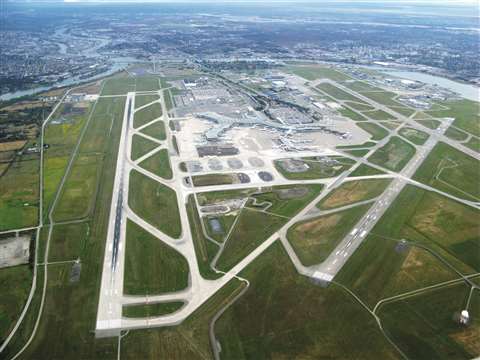
Ground was recently broken on the $6.8 billion project to expand Vancouver International Airport
One infrastructure project of note is the expansion of Vancouver International Airport (YVR). Ground was recently broken on the CAD$9.1 billion (US$6.8 billion) scheme, which is comprised of more than 75 smaller projects and is expected to take 20 years to complete.
YVR is one of the fastest growing airports in North America, with a passenger count of more than 24 million in 2017, and those numbers are forecast to rise to 32 million by 2022.
By the end of 2018, construction activities at the airport will create nearly 2,500 full-time construction jobs on Sea Island and hundreds more off site.
Fiona Famulak, president of the Vancouver Regional Construction Association, said, “The Vancouver Regional Construction Association applauds YVR’s vision and investment in its airport infrastructure as it will bring significant economic and employment benefits to both the construction industry and the province as a whole.”
Mexico referendum
Turning to Mexico, with the election of the new president Andres Manuel Lopez Obrador of the National Regeneration Movement, audits of contracts awarded in the infrastructure and energy sectors are expected. Also, tight fiscal and monetary policies are likely to limit the country’s real GDP growth to 2.3% in 2018 and 1.8% in 2019, while economic and political uncertainty continue to hinder construction spending.
Obrador recently announced that work on the new Mexico City International Airport project will be halted following the results of a referendum.
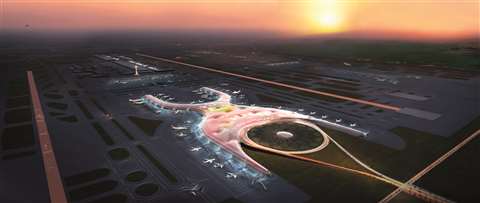
Holding a referendum on the controversial project was one of Obrador’s campaign promises and 70% of those who voted were in favour of abandoning the scheme. However, only one million people voted, which equates to less than 1% of the population.
The estimated cost of the airport – for which foundations have already been built – is $13 billion.
The project has been plagued with problems since it was first approved. For instance, a rail line intended to transport materials to and from the site was held up by land disputes and heavy rain, and a delay in the delivery of one of the runways threatened to impede the entire project if it failed to clear safety tests and certifications in time. In addition, a key contractor filed for bankruptcy and the project co-ordinator sued the airport operators.
Obrador said that the current international airport would be upgraded instead, and two runways would be added at a military airfield south of the city. He added that another airport, at Toluca, would be repurposed.
STAY CONNECTED


Receive the information you need when you need it through our world-leading magazines, newsletters and daily briefings.
CONNECT WITH THE TEAM










